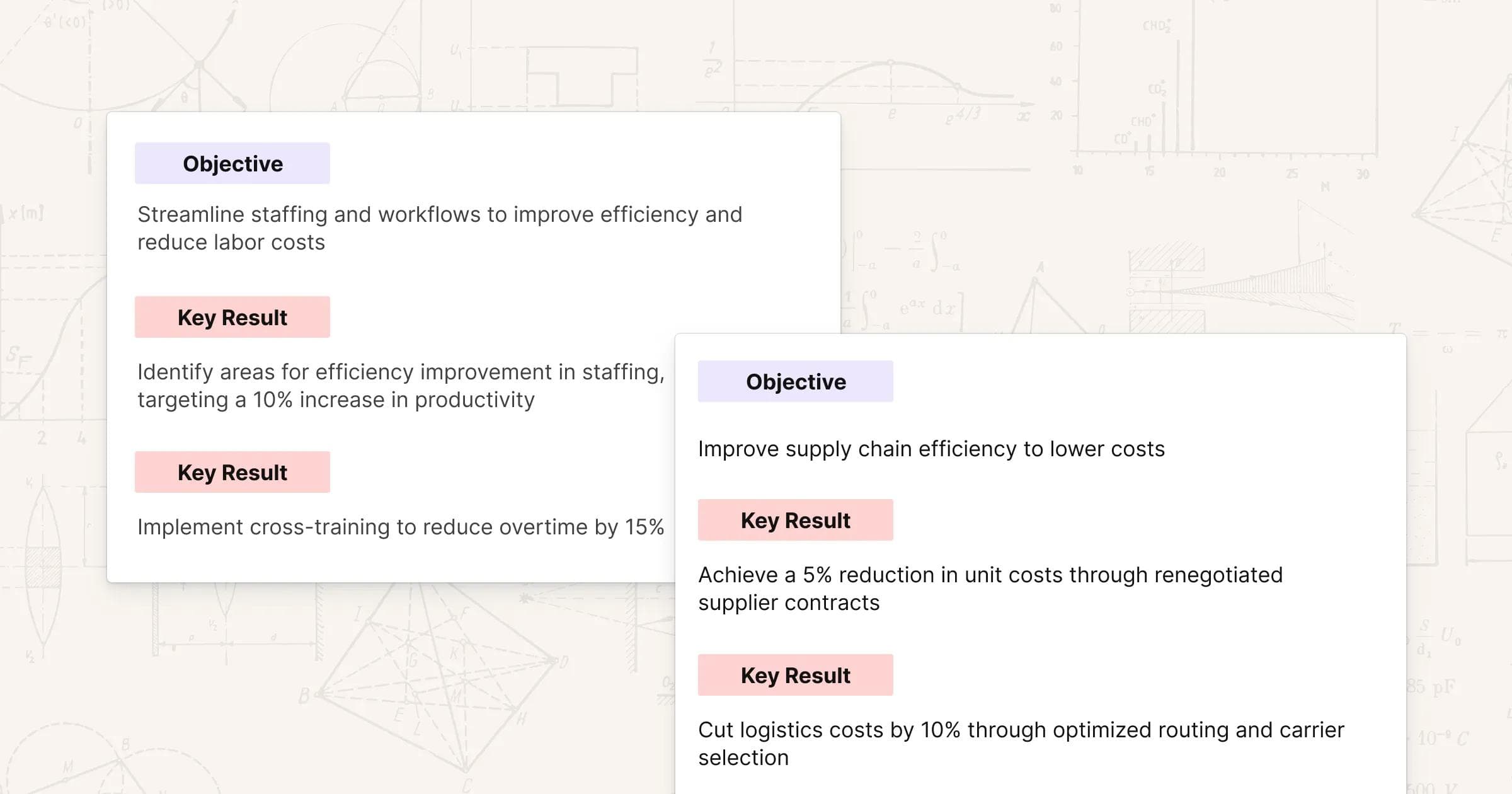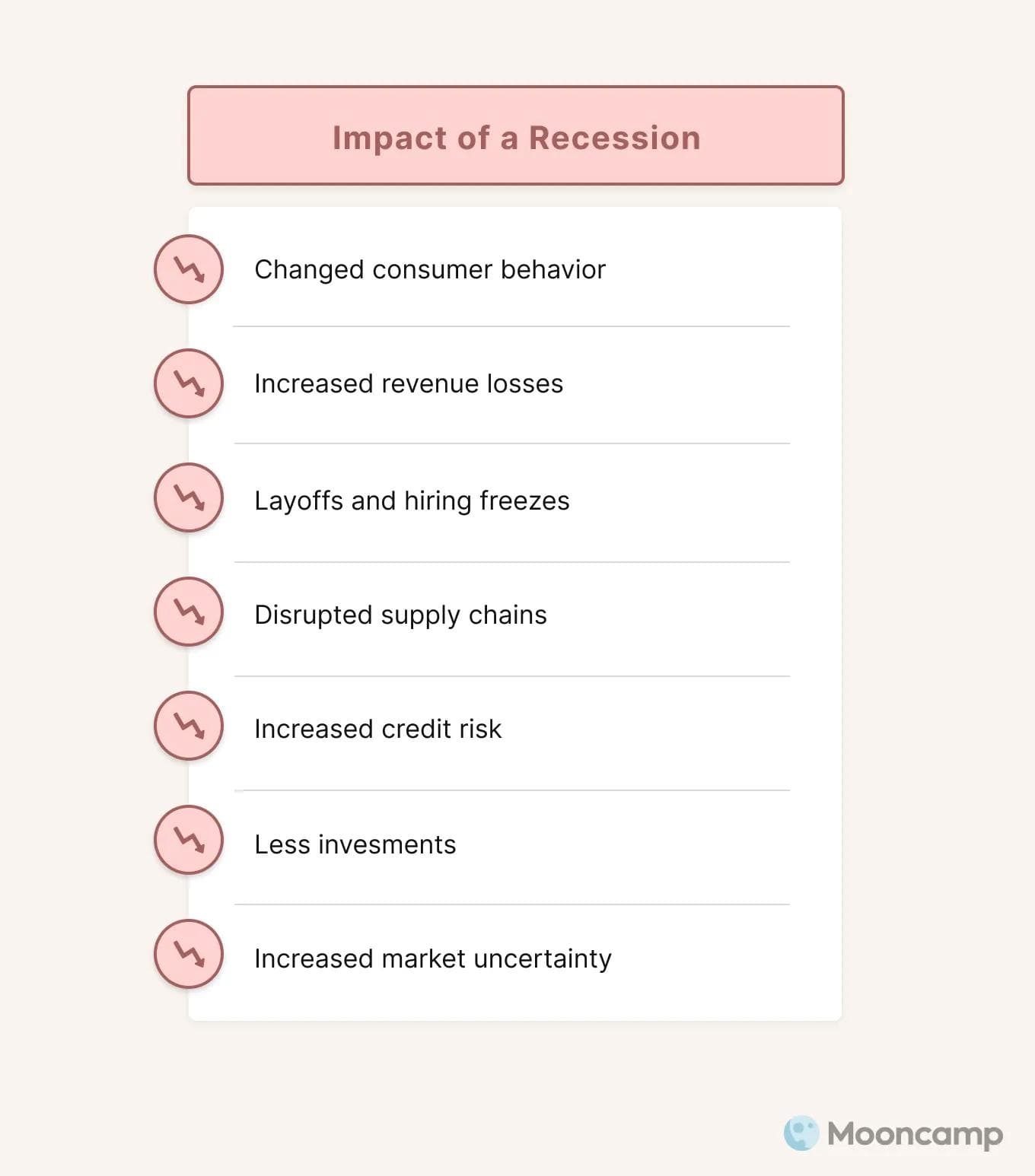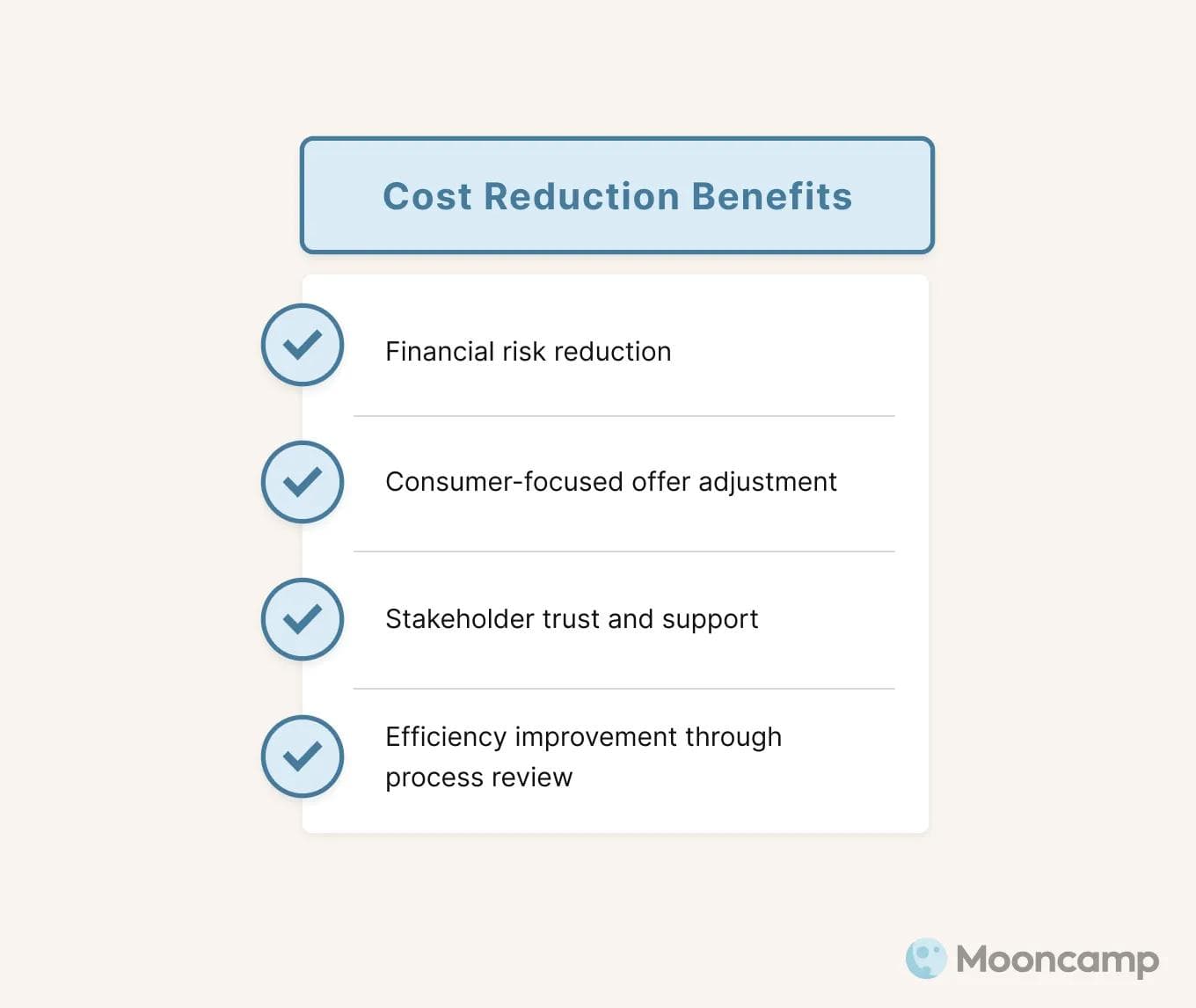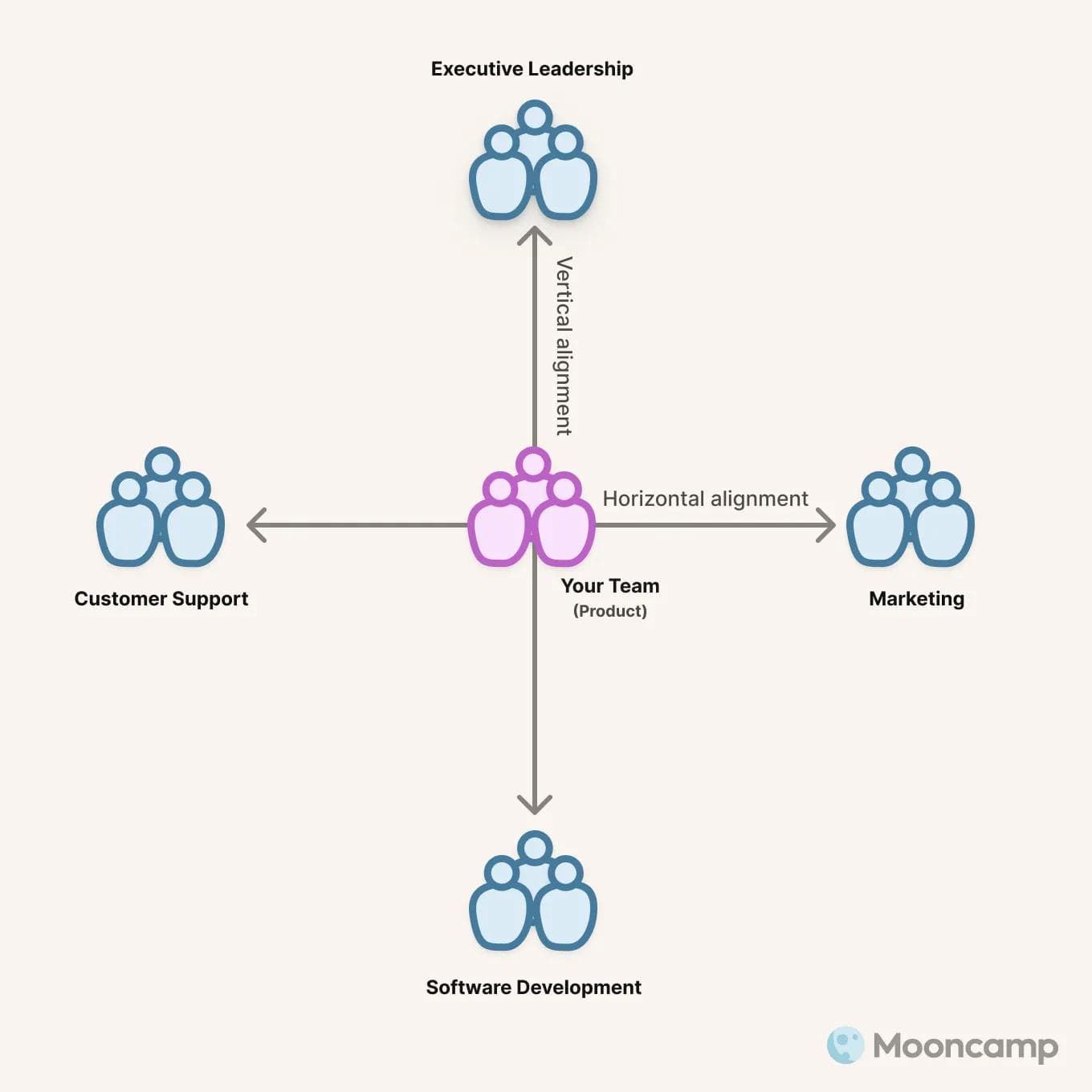How to save costs with OKRs during the recession [2025 Guide]

The current recession is creating an economic environment characterized by uncertainty and rapid change. To survive, companies need to cut costs while becoming more efficient, resilient and agile.
In this article, we explain how the recession is affecting companies, why cost savings are the most effective tool in times of crisis and how OKRs can help make companies crisis-proof.
What to expect:
- How does the recession affect companies?
- How can companies react?
- Make companies crisis-proof: Preparation
- Why OKRs help to save costs and become more efficient
- Use OKRs for cost savings: This is important
- Formulating Cost Reduction OKRs: Tips and examples
- Conclusion: More efficient and profitable with OKRs
How is the recession affecting companies?
For some time now, wars, rising energy prices and inflation have been causing a significant economic downturn. Not everyone is affected in the same way, but everyone is being affected to some degree. The effects of the recession on companies of almost every type and size are diverse and far-reaching:
- Consumers are generally spending less money and consumption habits are changing. As a result, sales are declining and companies are less profitable.
- To cut costs, many companies are resorting to layoffs, hiring freezes or wage cuts. This is often reflected in the morale and productivity of the remaining employees.
- Some organizations use the recession as an opportunity to restructure operations, streamline processes and focus on their core business.
- Economic crises can disrupt supply chains and cause costly delays. This particularly affects companies that rely on global suppliers.
- Credit risk increases. Lenders become more cautious in lending and companies may find it difficult to repay their debts.
- Many companies are investing less in new projects, research and development. This can have a negative impact on product quality and their competitiveness.

Overall, recessions create uncertainty in the market and the economic environment changes rapidly. Sales forecasts are no longer reliable in such volatile times. This makes it increasingly difficult for companies to plan for the future and make sound business decisions. Smaller or financially weaker companies in particular are at risk of failing quickly and are finding it difficult to withstand the economic downturn. But even large companies need to adapt, cut costs and become more efficient in order to remain profitable.
How can companies respond? Cost savings as the most effective means
In times of crisis like these, cost savings are the most effective way for companies to be well positioned for the time after the recession, both in the short term and in the long term - for several reasons:
- Cost savings help maintain cash flow and business operations even though revenues are declining. The risk of bankruptcy is reduced and the impact of declining sales on profit margins is mitigated.
- Reduced costs also allow companies to respond to reduced consumer spending and continue to offer their products at competitive prices.
- Companies with effective cost management are more likely to gain the trust of investors and stakeholders and can secure their long-term support.
- When organizations need to reduce costs, they are forced to review their operational processes. This usually reveals a number of things that can be optimized, making the company more efficient overall.
In sum, sustainable cost savings strengthen the financial resilience of companies to prolonged economic downturns. They also enable flexibility during and after the crisis: as soon as the economy recovers, growth opportunities can be exploited more quickly from a cost-efficient position.

With the right strategy, the current economic crisis can also be an opportunity for companies to assert themselves against their competitors. However, this requires the right mindset, a high degree of agility and a clear focus.
Making companies crisis-proof: Preparation
In order to make themselves recession-proof and become more resilient, companies should first analyze their own strengths and weaknesses and carry out a kind of health check. They should assess their financial situation as well as their market position and current strategic direction. The aim should be to obtain a balanced, holistic and realistic picture of the company.
The concept of the balanced scorecard provides orientation for this assessment. Kaplan and Norton's model takes into account the customer, process and development perspective in addition to the financial perspective.
Derived from this, the following questions can help to understand the initial situation:
- How will our customers react to the recession?
- How will our competitors behave?
- Will we continue to earn money?
- Are drastic cost reductions necessary? How can we do this?
- Can we continue to invest in research and development? Why or why not?
- How can we develop new business areas?
The answers to these questions can then be used to derive an individual concept (strategy map) including a holistic strategy for cost savings.
Why OKRs help to save costs and become more efficient
In order to successfully implement this strategy, companies need the appropriate method. OKRs are particularly suitable as a "cost reduction framework" for day-to-day work because they can help to speed up decision-making, optimize processes and focus on better results, among other things.
💡 Tip: If you want to brush up on the OKR basics, take a look at our guide to the OKR method.
1. OKRs focus on outcomes
During a recession, it is important for companies to focus on the products and services that really deliver added value for customers. Everything else can be put on the back burner for the time being. However, many companies are still very output-oriented and remain stuck in old ways of thinking instead of focusing on effective and measurable results. As a result, a lot of potential is lost and strategy implementation usually fails because success is measured incorrectly (more on this in our article on OKR mistakes).
OKRs can help with reinventing how things are done. They are designed from the ground up to achieve results that bring real (business) benefits. Both Objectives and Key Results are formulated in a results-oriented way. The output is only mapped in the initiatives (= concrete activities). This ensures that, in times of crisis, the teams focus on the tasks that actually move the company forward.
💡 Tip: You can read more about the difference between output vs. outcome on our blog.
2. OKRs ensure alignment
Although companies should be pulling together more than ever during a recession, teams and departments are often poorly aligned. Silo thinking and duplication of work are the order of the day and not only cost companies valuable resources, but in the worst case also the motivation and commitment of the workforce. This in turn leads to a loss of productivity - and it has been proven that this can cost a lot of money: According to Gallup, unmotivated employees cost the global economy about $8.8 trillion each year. This makes them one of the biggest cost factors.
OKRs counteract this by making alignment the standard: With OKR planning sessions, the OKRs of the individual teams and departments are always vertically aligned with the higher-level corporate OKRs. The OKRs are developed jointly, i.e. top-down and bottom-up.
In addition, during the planning phase - usually directly after the OKR planning session - it is worked out on a horizontal level which other teams your own team is dependent on and how you can best work together. This uncovers synergies and breaks down silos. A separate OKR Alignment Workshop can also be worthwhile for this.

By involving employees from the outset, they have a better overall understanding of how their daily tasks contribute to the company's goals. They tend to get more involved and work together more effectively. Duplication of work and competing as well as inefficient initiatives that do not contribute to the overall strategy are avoided. This ultimately saves time and money.
3. OKRs enable agility
Agility is one of the most important characteristics when it comes to mastering difficult situations in a business context. This is also the case in a recession. Agile organizations can react more flexibly to changes of any kind. This is exactly what matters in times of crisis. OKRs support this by setting goals in shorter cycles of 3 to 4 months instead of the traditional annual basis. This allows companies to adapt more quickly to changing conditions.
Employees with an agile mindset also think in a customer-centric way: they are intrinsically motivated to create real added value. This mindset is extremely helpful in a recession that is full of unforeseen changes and challenges.
4. OKRs enable data-based decisions
Cost savings often require quick decisions to be made. OKRs provide the right data for this. Like alignment, their evaluation is also standard in the OKR process: The teams talk about the current status of their Key Results in weekly OKR check-ins. This allows them to keep an eye on the progress they are making towards their goals, where there are bottlenecks and which initiatives may no longer be needed. Problems are identified more quickly. The risk of costly mistakes is reduced.
Each OKR cycle also ends with an OKR review, in which employees present and analyze the final status of the OKRs for the respective cycle. The findings from one cycle (usually a quarter) are also carried over to the next. The strategic orientation is also continuously evaluated and corrected and improved if necessary. Overall, management can therefore act on the basis of data and adjust the course quickly if necessary.
5. OKRs make visible where resources are being wasted
Overall, the general benefits of OKRs also mean that it becomes visible where resources are being used unnecessarily - and which budgets can potentially be cut.
In general, OKRs force companies to focus on 2 to 4 key Objectives per quarter. The OKR review at the end of each cycle at the latest also shows whether the available resources have been used sensibly for these focus topics and whether the teams have achieved their Objectives. If this is not the case, readjustments are made in the next cycle. Overall, this results in a more effective allocation of resources.
Use OKRs for cost savings: What's important?
In general, OKRs offer a structured framework for effective goal management in times of crisis. Anyone wishing to implement cost savings during the recession should also pay attention to the following points:
1. Focus on efficiency instead of budgets
A recession leads to a temporary shortage of financial resources. However, reacting to this with quick solutions and cutting budgets is not enough. Although this may ensure survival in the short term, it will not get companies through the crisis in the long term.
Instead, financial planning should be aligned with corporate goals and OKRs in an outcome-oriented approach - always with a close eye on the time after the downturn. This also involves streamlining, rethinking or completely dissolving processes. OKRs should therefore always aim to reduce costs and increase efficiency at the same time. Overall, an organizational change in behaviour must take place in order to adapt to the new reality.
2. Stay up to date with industry trends
Companies should keep up to date with industry trends. They should understand how the market is behaving and closely analyze current developments in their own market, but also in capital markets or upstream industries in the supply chain.
This enables them to anticipate challenges to some extent and adapt their strategy and OKRs accordingly. Companies that are up to date with industry trends are also the first to recognize when the economy recovers and can take advantage of growth opportunities more quickly.
3. Track OKRs and make data-based decisions
If you only focus on the strategy and forget to actually measure progress, even the most well thought-out crisis plan is doomed to failure. Just as important as the formulation of meaningful cost reduction OKRs is consistent OKR reporting. Companies should continuously monitor and evaluate their progress in order to
- recognize trends,
- keep motivation and commitment high and
- make data-based adjustments if problems arise or individual initiatives do not bring the hoped-for success.
💡 Tip: The more employees a company has, the more helpful OKR software such as Mooncamp can be. This makes it easier to track how the OKRs are developing. Goals, structures and progress are clearly visualized in one place - no matter how many teams are involved. It also simplifies weekly check-ins and enables detailed analyses and efficient reporting via individually configurable dashboards.
Formulating cost reduction OKRs: Tips and examples
What does this look like in practice? The following three tips will help you to formulate OKRs that will get a company through the recession and help it to make sustainable cost savings and become more efficient:
- Rely on storytelling: People are best reached with good stories. In other words: who benefits, what value do we create with our work and what does the future look like when we reach the desired state?
- Use leading indicators: Key Results must be measurable and therefore always have exactly one key figure. In the case of cost savings, however, this should not be a budget or sales target, but always a leading indicator - i.e. a key figure that can be directly influenced and where changes are visible in the short term. {{< image src="resources/lagging-vs-leading-indicators" alt="Lagging and Leading Indicators" max-width="100%" >}}
- Finding the right balance: Cost reduction OKRs should not be designed exclusively to save money in the short term. To really reduce costs sustainably and become more efficient, you should also have the time after the downturn in mind and also formulate some OKRs that will move the company forward and aim to quickly take advantage of later growth opportunities.
💡 Tip: We have summarized all the criteria for good Objectives and Key Results as well as specific formulation tips in our article "How to write OKRs". We have also compiled over 120 OKR examples from real companies for sales, marketing, human resources and more.
5 examples of Cost Reduction and Efficiency OKRs
Conclusion: More efficient and profitable with OKRs
The bottom line is that there is only one way for companies to sustainably reduce costs and survive a recession or crisis: They need to put outcomes for customers at the center, make their processes more efficient and focus on their core business. OKRs can help to create this focus, improve collaboration and achieve cost savings and efficiency targets.

